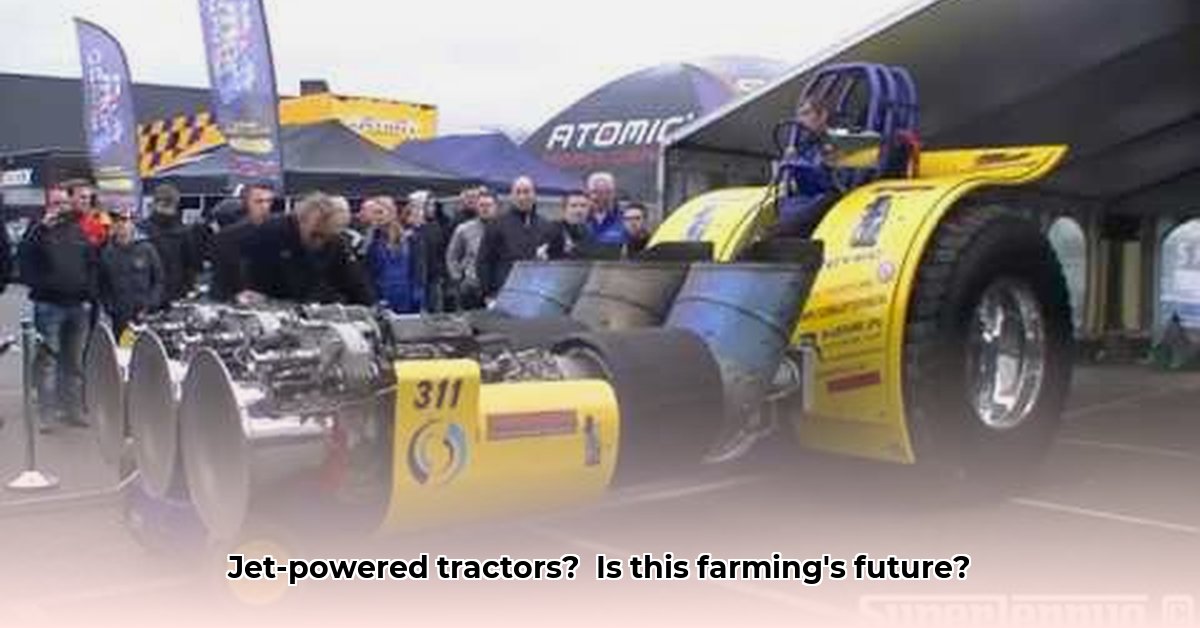
Let's be honest: a jet-powered tractor pulling incredible weights is undeniably impressive. These machines represent a pinnacle of engineering, showcasing immense power. But is this extreme power a practical solution for modern farming, or simply a captivating spectacle? This report analyzes the viability of jet-powered tractors in real-world agriculture, weighing their advantages against significant challenges. For more on powerful tractor pulls, check out this Illinois tractor pull website.
The Allure of Extreme Power
The visual impact of a jet-powered tractor pull is undeniable. Videos showcasing their strength go viral, highlighting the raw power these machines possess. However, in agriculture, brute force isn't always the optimal solution. Success hinges on more than just pulling power.
Beyond the Spectacle: A Realistic Assessment
The reality of jet-powered tractors in farming is far more nuanced than highlight reels suggest. Several critical obstacles impede their widespread adoption:
Fuel Costs: Jet engines are notoriously fuel-inefficient. The exorbitant cost of fuel would render their operation financially unsustainable for most farmers. Consider the analogy: driving a racecar to the grocery store is impractical and costly – similarly, the fuel expenses of jet-powered tractors outweigh any potential benefits.
Maintenance Complexity and Cost: Maintaining a jet engine is complex and expensive, requiring specialized technicians and parts. The associated downtime and repair costs dramatically increase the overall operational expense, surpassing that of conventional tractors.
Environmental Impact: Jet engines generate substantial emissions, raising concerns about soil and air quality. This contradicts the growing push towards sustainable farming practices, making their use environmentally problematic.
Safety Concerns: The inherent power of jet-powered tractors presents significant safety risks, demanding exceptionally skilled operators and rigorous safety protocols. The potential for accidents surpasses that of traditional tractors, demanding extensive safety measures.
Risk Assessment: A Quantitative Analysis
A thorough risk assessment is crucial for evaluating the feasibility of jet-powered tractors. The following matrix quantifies the likelihood and impact of key risk factors:
| Risk Factor | Likelihood | Impact | Mitigation Strategies |
|---|---|---|---|
| Fuel Consumption | Very High | Very High | Research into alternative fuels (e.g., sustainable aviation fuel), engine efficiency improvements |
| Maintenance Costs | Very High | Very High | Development of more robust, easily maintainable engines |
| Environmental Impact | Moderately High | High | Advanced emission control systems, investigation into soil impact |
| Safety Hazards | Very High | Very High | Advanced safety systems, comprehensive operator training programs |
| Regulatory Compliance | Moderately High | High | Proactive engagement with regulatory agencies |
Niche Applications and Future Prospects
While widespread adoption appears unlikely in the near term, niche applications – such as large-scale land clearing or specialized tasks demanding immense pulling force – might benefit from jet-powered tractors. However, even in these scenarios, a thorough cost-benefit analysis remains essential.
"The current technology presents significant hurdles," states Dr. Anya Sharma, Agricultural Engineer at the University of California, Davis. "Overcoming these challenges requires significant technological advancements and a shift in the economic landscape before widespread adoption is feasible."
The future of jet-powered tractors depends on breakthroughs in fuel efficiency, emission reduction, and simplified, cost-effective maintenance. Hybrid systems, combining jet and traditional engines, might offer a more practical transitional solution. The path from spectacle to practical agricultural tool remains long and challenging.
Mitigating the Environmental Impact: A Multifaceted Approach
The significant environmental impact of jet-powered tractors demands a comprehensive solution involving technological innovation, responsible agricultural practices, and supportive policies. Manufacturers need to invest in cleaner fuel technologies, farmers must adopt precise agricultural methods, and governments must implement stricter emission standards and incentives for sustainable solutions. This requires collaboration across the agricultural technology sector.
"Sustainable solutions are crucial," emphasizes Dr. Ben Carter, Environmental Scientist at Cornell University. "We need a three-pronged approach: technological advancements, responsible farming practices, and robust government regulations."
Only through a unified approach – integrating technological innovation, sustainable farming, and supportive policies – can the environmental concerns associated with jet-powered tractors be addressed. The future viability of this technology rests on balancing its immense power with environmental responsibility.